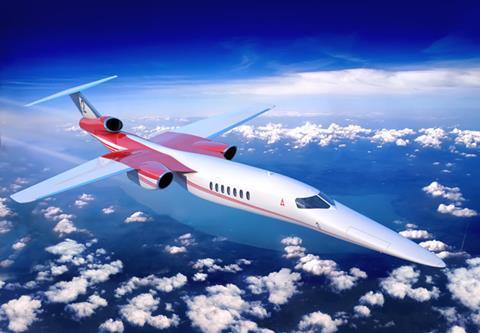The US Federal Aviation Administration is moving forward with an effort to establish noise certification standards for supersonic aircraft, a development intended to set the US government on a path to permitting a new class of ultra-fast jets.
The agency on 30 March released proposed standards related to takeoff and landing noise for “a certain class of new supersonic airplanes”.
The FAA says those standards account for technical advancements since the introduction of supersonic commercial aircraft in the 1970s.
“There is renewed interest in the development of supersonic aircraft, and the proposed regulations would facilitate the continued development of airplanes by specifying the noise limits for the designs, providing the means to certificate the airplanes for subsonic operation in the United States,” says the notice of proposed rulemaking.
The proposal comes as several companies, including Boom Supersonic and Aerion Supersonic, have been developing a new-generation of supersonic aircraft. Boom has been working on a supersonic demonstrator called XB-1 as part of a long-term plan to develop Overture, a conceptual Mach 2.2 commercial jet capable of carrying 55-75 passengers. Aerion is developing AS2, a supersonic business jet.

The FAA must still publish its proposal in the US government’s register, though the agency says it does not know the expected publication date. After publication, the FAA will receive public comments for 90 days.
The proposed rule notes that the noise regulations for supersonic aircraft currently on the books apply only to the BAC-Aerospatiale Concorde, which has been retired since 2003.
The FAA proposes to define a class of supersonic aircraft called “Supersonic Level 1”, which would encompass supersonic aircraft with maximum takeoff weight of 68,000kg (150,000lb) and maximum operating cruise speeds of M1.8.
The proposed rule would address the noise of those aircraft when operating at less than subsonic speeds within the USA. It would not do away with rules prohibiting civil aircraft from operating at speeds greater than M1.0 over US land.
The FAA has based its proposed rules on industry input and supersonic transport aircraft studies conducted by NASA. That agency, as part of its commercial supersonic aircraft work, is developing X-59 Quesst, an experimental supersonic aircraft that would not produce a sonic boom.
The FAA does not yet have sufficient data to establish rules addressing the cruise-altitude noise of supersonic aircraft. “More research is needed on the production of noise at supersonic cruise speeds and the regulatory approaches that would be appropriate,” it says.
Additionally, the proposal will serve as a “launching point for adopting appropriate standards for future classes” of supersonic aircraft, such as heavier and faster jets.
The FAA established its first civil supersonic aircraft noise rule in 1978 for Concorde, though that rule did not account for future supersonic types, the rule says.


























